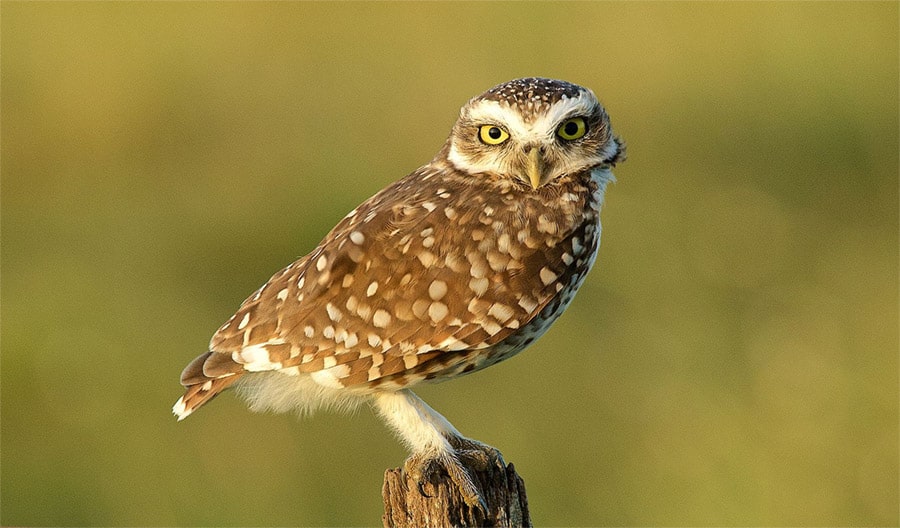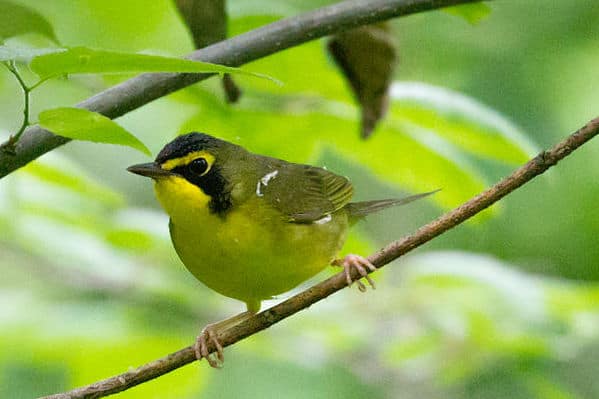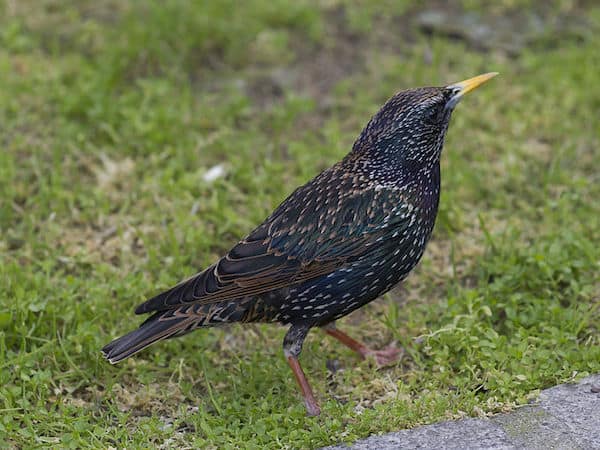Look for
The burrowing owl is quite small, weighing only about 150 grams (a third of a pound). Due to its brown and buff-white coloration, its camouflage is extremely effective. Birders and researchers learn that even if an owl does not reveal itself by movement or flight, the round shape of the head—such an unnatural “shape” in nature—and its bright lemon-yellow eyes will often give away its otherwise excellent camouflage. This owl lacks ear tufts and is the only North American owl in which the female is not significantly larger than the male.
Because the male spends more time in the sunlight during the breeding season, the sexes can often be distinguished during the breeding season on the basis of plumage color: Males are bleached pale. The male is active day and night during this period, taking only brief rests.
Burrowing owls generally occupy their breeding grounds from March through September. Shortly after pair formation, the female lays and primarily incubates 6 to 9 eggs for 20 to 28 days. Immediately after hatching, the young owl chicks (also known as owlets) have white, fluffy down feathers.
In the field, we called this the “white fluffball” stage. These feathers are eventually molted and replaced with a mottled brown plumage. These “brown juveniles” can still be distinguished from the adults until they finally shed all of the down and gain flight feathers.
The white fluffballs, and especially the brown juveniles, loaf and play outside the nest burrow during mild weather. In caring for the young, adult males and females have distinct roles, at least until the young emerge from the burrow for extended periods. The female incubates the eggs and tends the young while the male forages and provides for her and the chicks.
Listen for
A mellow, dovelike coo-HOOO that does not sound like an owl. Also rattles like a rattlesnake from within its nest burrow.
Where to Find a Burrowing Owl
The burrowing owl lives on prairies, farmland, and open grassy areas such as airfields, where it nests in underground burrows. Its population is declining because of loss of habitat throughout its range.
Remember
The burrowing owl is the owl most likely to be seen during daylight in open grassland.
Wow!
Home stinky home! Burrowing owls sometimes line their nest burrows with cowpies!




